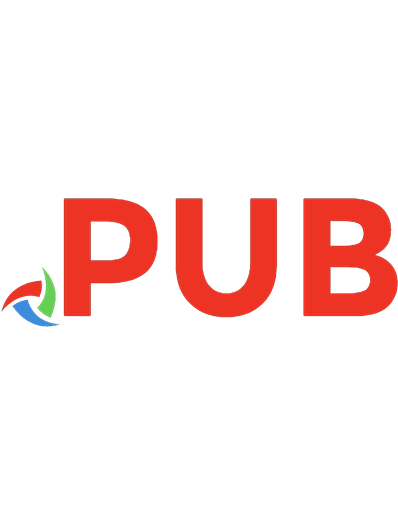Red Vienna: Experiment in Working-Class Culture, 1919-1934 0195069145, 9780195069143
From 1919 to 1934, the Socialist government in Vienna sought to create a comprehensive working-class culture, striving t
424 150 6MB
English Pages 288 [278] Year 1991
Polecaj historie
Table of contents :
Preface
Contents
1, Introduction
2.Vienna as Socialist Laboratory
3. Municipal Socialism
4. Socialist Party Culture
5. Worker Leisure: Commercial and Mass Culture
6. The Worker Family: Invasions of the Private Sphere
7. Conclusion
Notes
Index
Citation preview
RED VIENNA: Experiment in Working-Class Culture
1919-1934 Helmut Gruber. -
New York • Oxford OXFORD UNIVERSITY PRESS
1991
C )x IIII
ti 1111ivnsi1y l'n·ss
( hloul Nc·w York Tonmlo I )rlhi l\0111hay ( '.;1k11Ua Madf'as
l'rl;oli111,Jaya Si1tl{apon• Nairohi
110111{
Kou;1d1i
Kon!{
l'okyo
l>ar c·s S,1l,1.1m Cape• Town
Mc·lho11rm· A1Kk);mcl and assoc·ialc•d companic•s in
Hc·rli11 lhacla11
Copyri~ht © 199 I by Oxford University Press, Inc. l'uhlishl'd by Oxford University Press, Inc., 200 Madison Avenue, New York, New York I 0016 Oxford is a registered trademark of Oxford University Press All ril{hts resenied. No part of this publiution may be reproduced, slorecl in a retrieval system, or transmitted, in any form or by any means, elenronif the "International" ended the festivities. This spectacle was repeated 'our times before a total audience of 260,000. The success of this festival·esulting in part from the concurrent Olympics-in putting the SDAP on iisplay before the larger Viennese public, led to euphoric accounts in the >arty's publications. 175 Looking back on this most important of the socialist's mass festivals, it s difficult to share the party's sense of triumph. This and other celebrations 1eld between 1928 and 1931 had a compensatory character for the actual >0litical reversals of the SDAP. They pointed to a future of success while eaving current events out of the picture. During that time the festivals may ndeed have served as a transmission belt to the mass of unintegrated work:rs, but at best this effect was not truly political but more in the realm of nentalite-part of a general climate of working-class presence and imporance-which municipal socialism and, to a lesser degree, the party's culural program were able to enhance. But the mass spectacle also may have ,een a vast theater of illusions in which the power to topple the capitalist dol was nothing but a magical deception within the protective concrete valls of the Vienna stadium. 176 Outside those walls two months earlier, the Styrian Heimwehr leader !\'alter Pfrimer had attempted a putsch. It failed, hut signaled the intensiication of politics by fon-e. 177 Thl' I !1'.lI festival, which made Ill(' masses hemselves lhe hero wilh lhc powt·r lo tlin·t·1 lht· n111rsc ofhislory, did not 011fn11111his and ollu-r re.ii 1hrc;11slo llu- rep11hlic 011whost· survival lht· ii )/\I' depn1ded. l'c·r li11rru-r.,,rnd :1111lic·11rc.· i1111111i11g a1111;11'1 i11rdrairr had
Socialist Party Culture
111
an exorcistic effect in which "the power of individual cognition was surrendered and the power of decision making reduced in favor of a romantic and emotional attachment to a value system." 178 That such exorcistic rites, in which the individual lost himself in the all, could be even more dangerous is revealed in the ritual of Socialist Worker Youth around their campfires at the festival marking the summer solstice. In the prescribed litany of what amounts to a socialist auto-da-fe, all enemies were to be consigned to the flames: "trashy films, bad books, beer, liquor, wine, swastika, pipe, cigarettes, and all foolish fashions." 179 In the increasingly threatening political environment after 1931, the SDAP abandoned the chiliastic, pseudoreligious message of mass festivals and attempted to transform them into mass demonstrations with a more radical, ritualized content. 180 The move toward cultist expressions was in keeping with the aims of a newly created propaganda center within the Bildungszentrale under the direction of Otto Felix Kanitz. Its demand for more, better, and still more propaganda, without discussions of tactics by the rank and file, brought underlying differences between the party youth and leadership into the open. Kanitz and Deutsch, representing the leadership, argued that, in view of the increasing Heimwehr and Nazi threat to the republic, the disciplined use of propaganda was the order of the day and that democratic decisions on tactics would have to wait. Ernst Fischer, speaking for the socialist youth, countered that it was impossible to mobilize the masses without prior political discussion and that sheer obedience to party directives would lead to a vague romanticism. 181 Although the points made seemed academic, they had very serious undertones. Turning the participants of festival demonstrations into party soldiers was to depoliticize them at a time when the party leadership was more and more following a policy of retreat. During this final party crisis the festivals were stripped of their cultural aims and replaced by attempts to confront reaction and fascism in the streets by symbolic means. 182 The SDAP became a participant in a kind of street theater in which it demonstrated its public presence with flags, emblems, blue shirts, party badges, slogans, greetings, and demonstrations in response to those of its opponents. 181 But the raised right arm with clenched fist to counter the Nazi salute, the three-arrows emblem to negate the swastika, and the greeting "Freiheit" to drown out "Heil Hitler" were empty symbols, lacking in socialist substance and goals. 184 They neither encouraged confidence as expressions of defense, because the real struggle was not a street drama, nor could they mobilize the masses of workers for socialism's higher goals, which events had pushed to the margins of daily reality. As we have seen, socialist party culture was not some well-1houg-ht-011t sch('lll111;1 g-a1IH'ri11g-of dillusc org-a11i1ations i11d11di11g-many whosl' rcla1io11ship lo so, i;11is111(11111iil soci


![Rhodora
An experiment with the fruit of red Baneberry [5]](https://dokumen.pub/img/200x200/rhodora-an-experiment-with-the-fruit-of-red-baneberry-5.jpg)







